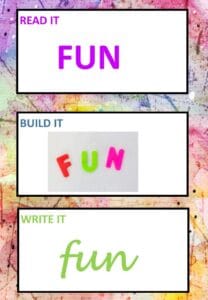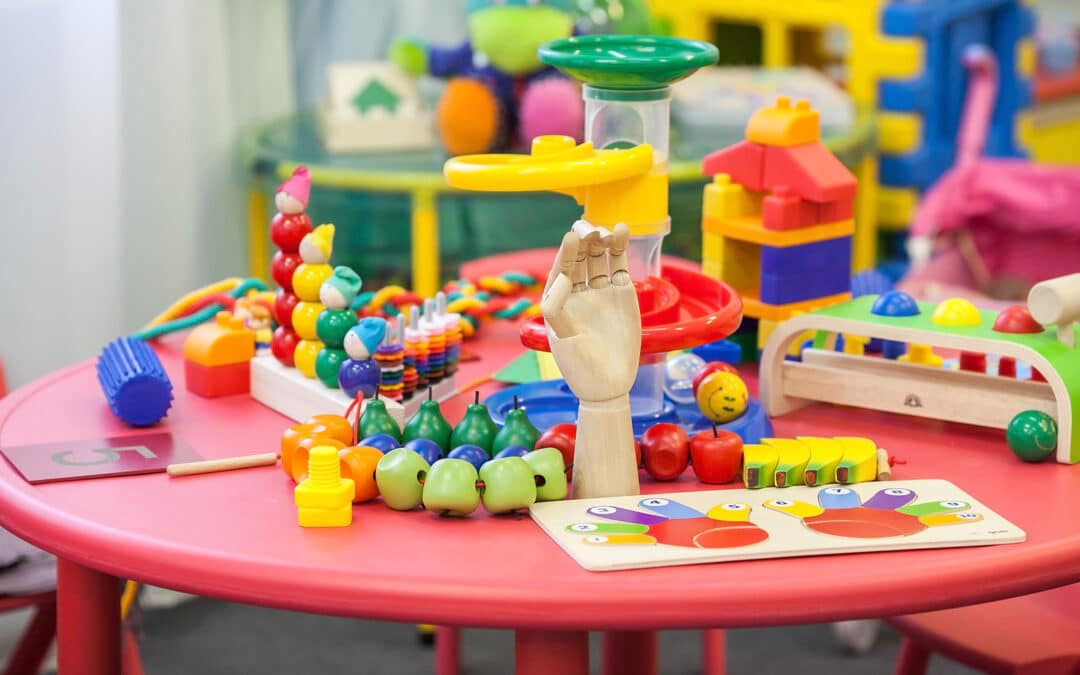Homeschooling your dyslexic child – multisensory activities
I’ve put together a short list of multisensory activities which are perfect for home learning. They are simple to do, need very few materials and are fun for children – especially those in early primary years.
Multisensory education is a technique which is especially useful for children who learn differently – including those with dyslexia.
What is Multisensory learning?
Multisensory techniques can be broken down into the following learning styles:
- Visual (sight)
- Auditory (hearing)
- Tactile (fine motor movement)
- Kinesthetic (gross motor movement)
It’s fairly typical for one of these to be predominant in children with dyslexia. Some are far more physical while others need to see it in order to understand the idea – but by combining three, or even all four styles, children gain a true understanding and of what they’re being taught.
What are the best multisensory activities to try at home?
1. Read it, Build it, Write it. This approach is perfect for teaching sight words (high frequency words which you cannot sound out). These words need to be mastered and memorized as they don’t fit a spelling pattern. A multi-sensory approach will help with memory.
This approach is perfect for teaching sight words (high frequency words which you cannot sound out). These words need to be mastered and memorized as they don’t fit a spelling pattern. A multi-sensory approach will help with memory.
How? Give your child a sheet of paper with three large boxes labeled READ IT, BUILD IT and WRITE IT respectively. They also need flashcards which already have sight words written on them (and a picture if possible), magnetic letters, tiles or blocks and a pen/pencil. Read the sight word with your child and see if your child can see why it has an irregular spelling pattern. Next, your child ‘builds’ the word with the physical letters before writing it in the final box.
2. Writing in Sand/Shaving Cream.  This technique combines visual, auditory, and tactile sensory approaches to reinforce letter-sound. Not only will the physical act of saying each letter help memorize them, but by using fingers to write, your child is accessing thousands of nerve endings that are used to transfer patterns to the brain.
This technique combines visual, auditory, and tactile sensory approaches to reinforce letter-sound. Not only will the physical act of saying each letter help memorize them, but by using fingers to write, your child is accessing thousands of nerve endings that are used to transfer patterns to the brain.
How? Using trays, a table, or anything else with a flat surface, spread a layer of sand/shaving foam. Call out a phonetic sound and ask your child to repeat it before using the index and middle fingers to write the letter that makes that sound. While they draw, ask them to name that letter out loud. When spelling out whole words, use phonetic words that follow spelling patterns.
3. Air Writing. Though at first it seems this activity is similar to writing in sand, air writing uses gross motor skills to reinforce both the actual shape of the letter and the sound that letter makes through muscle memory.
How? Ask your child to write with their dominant arm and ensure they’re moving from their shoulder so they use more muscles. It often helps if they ‘see’ the letter in a specific colour. As they write the letter, ask them speak the letter and the sound.
4. Arm Tapping. Arm tapping is a great technique for remember how to spell sight words. They say the word and then spell it while tapping them down their arm.
How? You’ll need cards containing the sight words you’ll be working on. Before you start, place your child’s dominant hand on the opposite shoulder and place that arm out straight. (right handed start on the left shoulder and work down, left handed start on the right wrist and work up the arm). As you hold each card up, your child needs to say each letter while tapping down their arm. Once each word has been tapped out, repeat the whole word while ‘sweeping’ left to right as if underlining.
5. Blending Boards. Blending boards are used to practice blending sounds into syllables. This helps with the decoding of words with more than one syllable. While there are actual physical boards that can be purchased (think of them as similar to a scrabble tile holder but larger), you can just as easily use a table. The deck of letters and sounds will help your child practice decoding simple and more complex words.
Blending boards are used to practice blending sounds into syllables. This helps with the decoding of words with more than one syllable. While there are actual physical boards that can be purchased (think of them as similar to a scrabble tile holder but larger), you can just as easily use a table. The deck of letters and sounds will help your child practice decoding simple and more complex words.
How? Start by preparing a deck of phonemes which can be substituted and moved to create different words. Each card should either contain a letter, a vowel or blended sounds (th, sh, ch, ed, etc). Each card is placed on the board in consonant, vowel, consonant (cvc) order. Ask your child to sound out each card in turn and then ask them to sound out the sounds together to form the word. If your child struggles initially, you can start with shorter words – vowel, consonant (such as ‘at’, ‘it’, ‘on’).
I’ve included these five multisensory activities as all are easy to complete at home with minimal effort. They will greatly benefit your child if they are struggling with the concept of decoding words, reading, and spelling.
For a more in-depth look at multisensory activities and techniques, see my post here.



Recent Comments